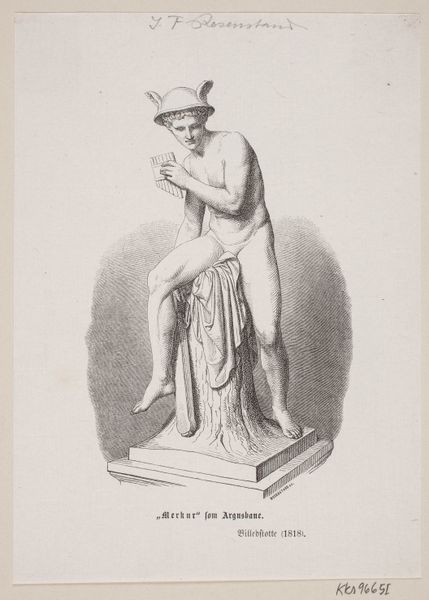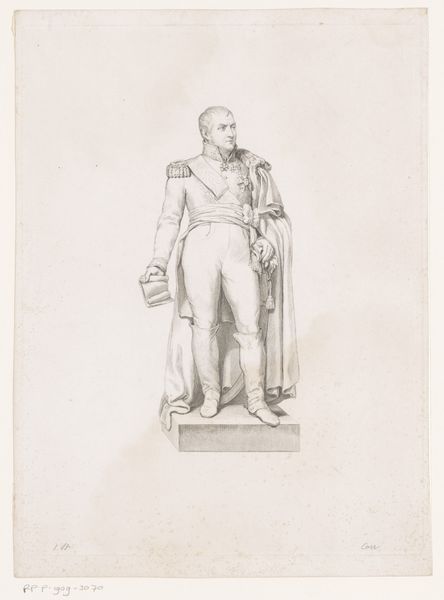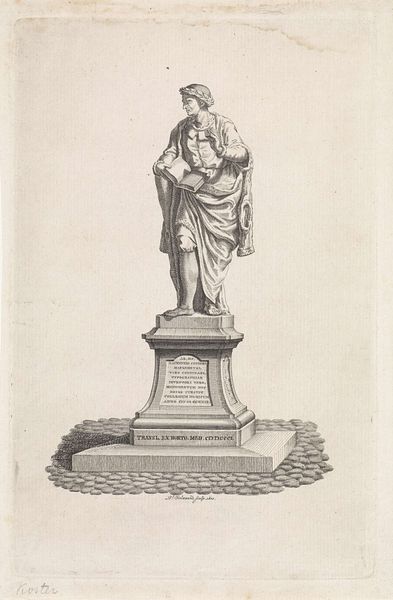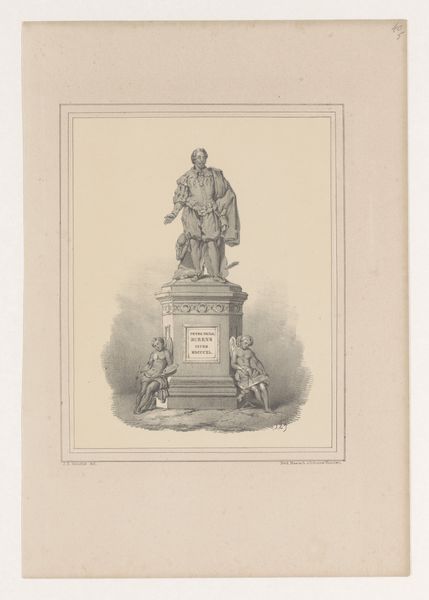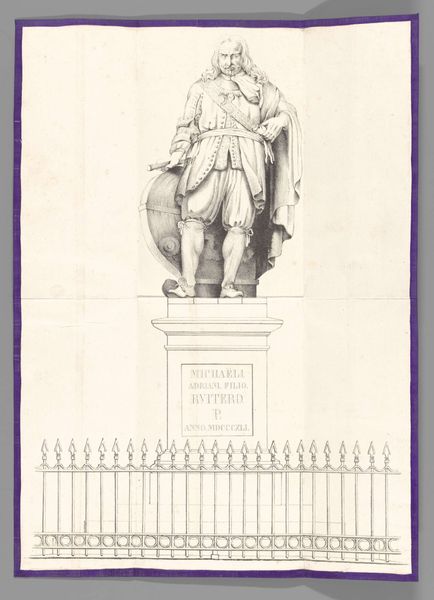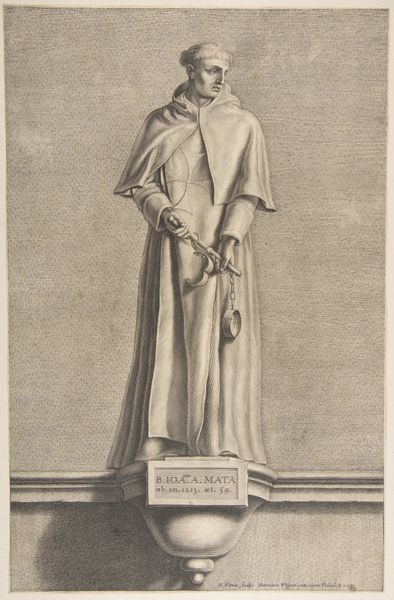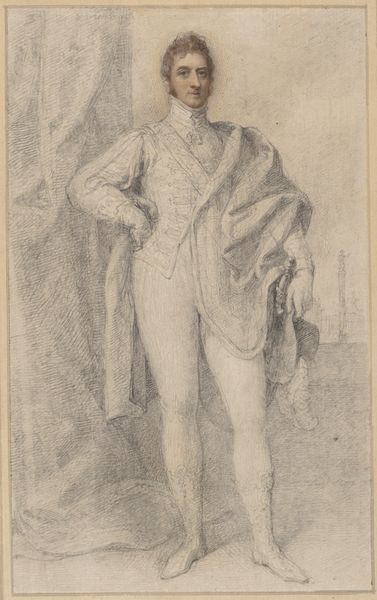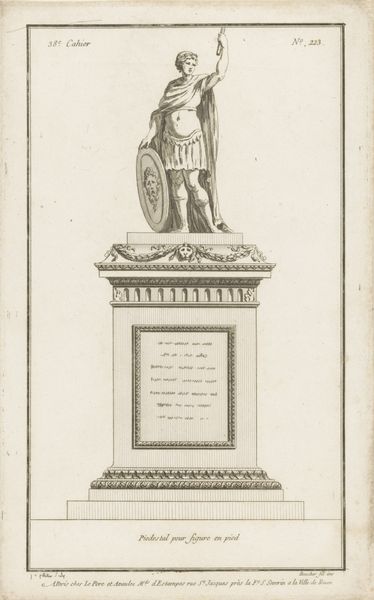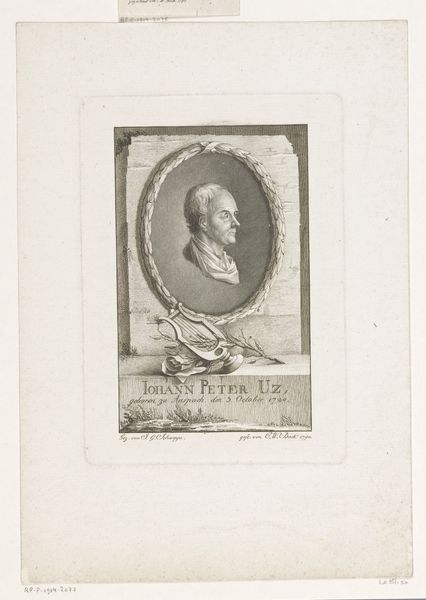
drawing, print, sculpture, pencil, engraving
#
portrait
#
drawing
#
statue
#
light pencil work
# print
#
pencil sketch
#
caricature
#
pencil drawing
#
sculpture
#
pencil
#
portrait drawing
#
academic-art
#
engraving
#
realism
Dimensions: height 215 mm, width 135 mm
Copyright: Rijks Museum: Open Domain
Curator: At first glance, there's an immediate gravitas to this image; the use of hatching gives real dimension. It has such a commanding, historical presence. Editor: This is an engraving entitled "Standbeeld van Rembrandt van Rijn" – "Statue of Rembrandt van Rijn" – crafted between 1852 and 1857 by Edouard Vermorcken. It's essentially a portrait of a monument. Curator: The engraving depicts a sculpted Rembrandt in what looks to be mid-stride, dressed in his signature painterly attire. I see a very classical sculptural presentation; his form appears to be solid, robust, elevated by a stone plinth, it speaks to 19th-century admiration of the Dutch master. What's especially interesting is the addition of the tools of the trade near his foot -- the palette and maulstick. Editor: Absolutely, the means by which such portraits enter public consciousness is very important, here it is mediated, translated into the more easily reproducible form of an engraving. That translation speaks to shifts in power, capital and artistic production during this period. Curator: It emphasizes how art becomes embedded into collective memory through distribution technologies, as well as artistic representations. This work highlights the materials from which Rembrandt's fame was crafted, through drawing and distribution. Editor: And thinking about the choice of Rembrandt as a subject... in post-Napoleonic Europe, national identity was constantly being constructed and reimagined, referencing the artistic contributions of past eras became a means of defining cultural value and establishing an artistic bloodline within that identity. Rembrandt here operates as an assertion of Dutch artistic brilliance on a broader European stage. Curator: Exactly, by engraving this sculpture and distributing it as print, Vermorcken ensures it moves beyond static admiration to become an active carrier of cultural meaning, reproducing value on paper for a potentially limitless audience. The image as material, a printed object shaping the perceptions of a society. Editor: So it’s fascinating how an artwork purporting to represent history in fact performs history, illustrating the complex intersections of national pride, cultural canonization and shifts in technology that are shaping 19th century artistic discourse. Curator: This engraving highlights the dynamic life of art—never simply existing in silent form, always participating and molding broader contexts. Editor: Indeed. It pushes us to rethink simple notions of "tribute", prompting dialogue about art as an engine for cultural narratives, actively producing values and perceptions.
Comments
No comments
Be the first to comment and join the conversation on the ultimate creative platform.
